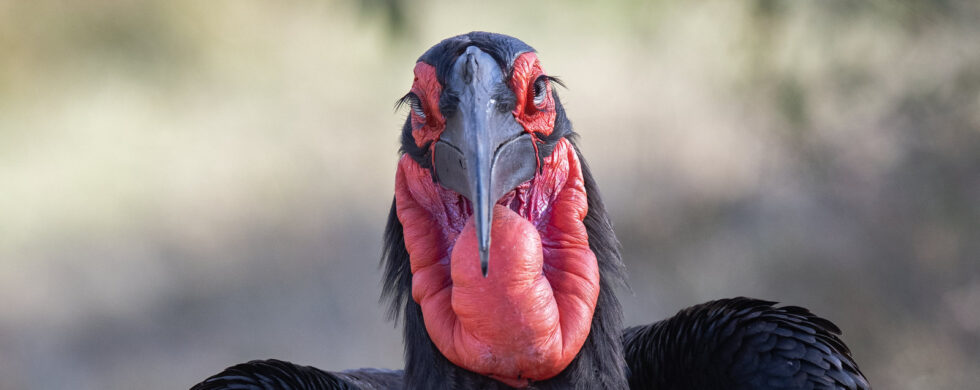
31
2023Southern Ground Hornbill
Shot of the Month – May 2023
Brace yourself, Sheila…. (scroll down veery slowly….and best viewed on a large screen)
Ok, I still wasn’t ready. Wow.
For the uninitiated, that is an extreme close-up of a Southern Ground Hornbill (SGH). I photographed this fellow in Kenya. To be fair, how many of us would pass the extreme close-up test??
(If you are viewing on small screen you will definitely want to zoom in to really appreciate the full effect)
The SGH is one of my FAVORITE creatures on the planet. Every sighting of these birds is an absolute delight.
Lets run through what makes them so special:
Killer Looks
There is no denying that these birds are striking in their appearance. The SGH is a large bird (wild turkey size for quick comparison) that can stand 4 feet tall (1.2 m), weigh up to 15 pounds (6.8 kg) and he definitely draws attention with his dramatic markings. The male’s face and throat is adorned in bright red and he can inflate that neck wattle to attract the females. The female looks similar though her neck wattle will have a violet blue patch for easy identification.
And did you notice those sumptuous eyelashes? Those are actually modified feathers!! They are used to protect the bird’s eyes from dust and sunlight.
Of course the other key defining feature of the SGH is that massive, slightly curved hornbill. It is an effective tool for foraging and capturing prey.
A good view of the SGH’s hornbill:
Just a stunning looking creature!
Amazing Sound
The males can use that large wattle to create a booming call that can be so loud that it can be mistaken for a lion’s roar and can be heard almost 2 miles (3 km) away. The large bump on the bird’s bill is a chamber that is used to amplify their calls. He basically has a built in boom box.
Click on this video to hear a small sample of one of their wonderful calls (Link here):
(Did you notice the lovely blue patch on the female on the left?)
Chill Vibe
SGHs live in groups of 2-12 individuals led by a dominant mating pair. The group spends most of their day walking slowly in search of food. These guys are just so cool and ganster as they come strolling by on the savannah. SGHs can fly and they roost in trees at night but they prefer sauntering and can cover up to 7 miles/day. (11 km/day).
These birds are carnivorous and will eat just about anything they can catch and fit down their throat. Prey include insects, frogs, toads, lizards, snakes and tortoises. SGHs will also hunt hares, rats, squirrels and even small monkeys. Once in Botswana I saw a crew come through a field and they were just destroying the small wildlife. Peck, there goes a spider. A few steps later, BAM, caught a lizard. A few more steps, POOF, caught a grasshopper…..they were relentless.
Many years ago I witnessed an epic battle between a SGH and a frog. You can read about it here.
A SGH tossing back a spider snack
Fascinating Family Life
Scientist describe the SGH as an “obligate cooperative breeder.” Scientists really know how to suck the romance out of something. So what does that mean??
A SGH family group is made up of a dominant male and female while the rest of the group members are typically younger males from previous clutches. The “helpers” support the mating pair in raising the chicks and will hunt, help take care of the young, and do much of the “work” of the flock. Female offspring may stay with the parents for only a few years as only one adult female is tolerated in a group and breeding is strictly between the breeding pair.
Experiments in captivity indicate that birds without at least 6 years experience as assistants rarely breed successfully if they do become breeders!! And studies show that if assistants are not present, adult SGH often fail to breed successfully.
At Risk
Sadly the SGH is struggling to survive and the species is listed as vulnerable to extinction globally. In South Africa, Lesotho, Namibia and Swaziland the bird is listed as endangered. The bird is also found in Angola, Rwanda, Burundi, Kenya, Tanzania, Malawi, Zambia, Zimbabwe and Mozambique. It is estimated that only 3,000 birds remain in the wild and numbers are dropping in most countries.
The primary threat to the SGH is loss and fragmentation of habitat as humans expand their footprint into wild areas. Hunting and poisoning of SGHs is a growing problem.
Another key issue is that the SGH is one of the slowest reproducing birds in the world. The SGH has an unusually long life span – up to 50 years in the wild and up to 70 years in captivity. However, these birds often do not reach sexual maturity until 4-6 years old and may not start breeding until 10 years old.
Although the female usually lays more than one egg, only one chick will survive more than a few days. The parents will ignore the younger siblings even when food is abundant. Scientists hypothesise that the other eggs are “insurance” in case the first egg does not hatch.
This lone chick matures slowly and is dependent on the parents for at least 2 years. Put this all together and a SGH group typically only produces and raises one new offspring every three years. This makes it difficult for the SGH to increase population numbers while under growing threats.
Somewhat encouragingly there are a wide range of conservation efforts now underway in many countries. Some groups focus on growing support to stop hunting and persecution of the birds. In other places scientists are collecting the 2nd chick from the nest before it dies. The scientists raise the chick and then reintroduce it into the wild.
Fingers crossed that we will have these wonderful, charismatic birds galavanting across the savannah for many generations to come….
Until next month….m
Sources
Africa Geographic – Southern Ground-Hornbill
Worldland Trust – Southern Ground Hornbill
Africafreak – Southern ground hornbill facts – Lifespan, habitat & diet
National Geographic – Southern Hornbill
Wikipedia – Southern Ground Hornbill
Nikon D5, 600mm f/5.6, 1/1500 sec, ISO 2000,

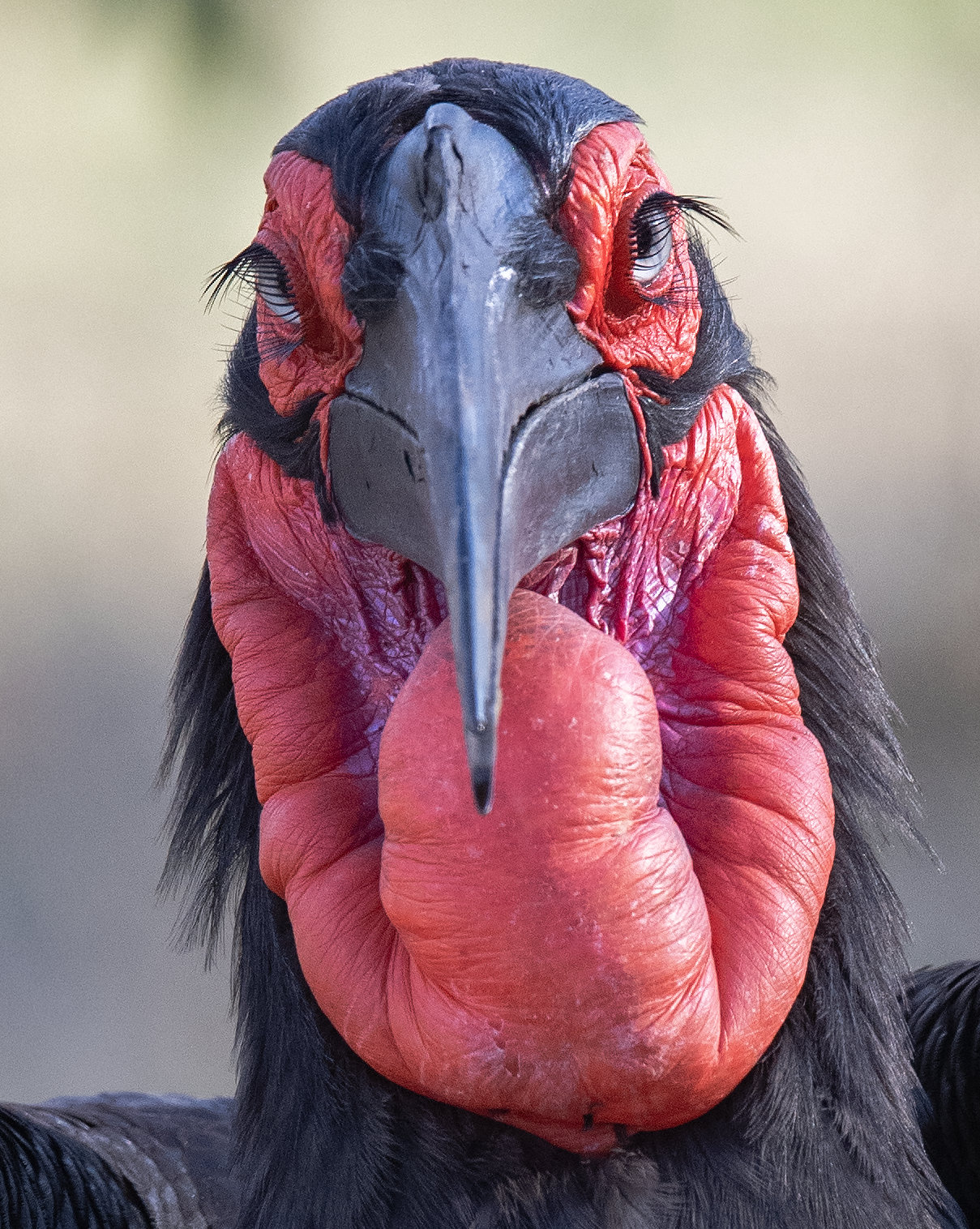
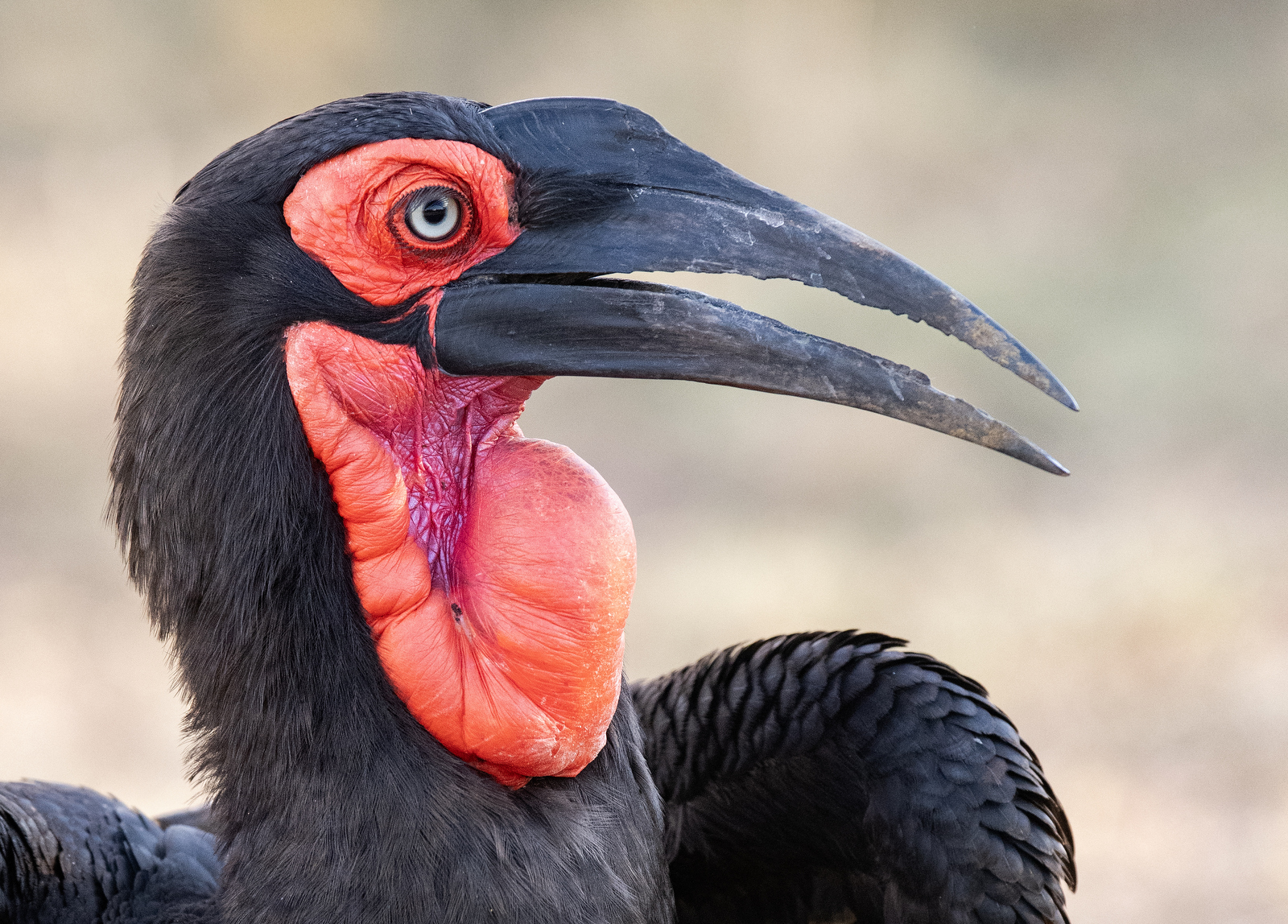
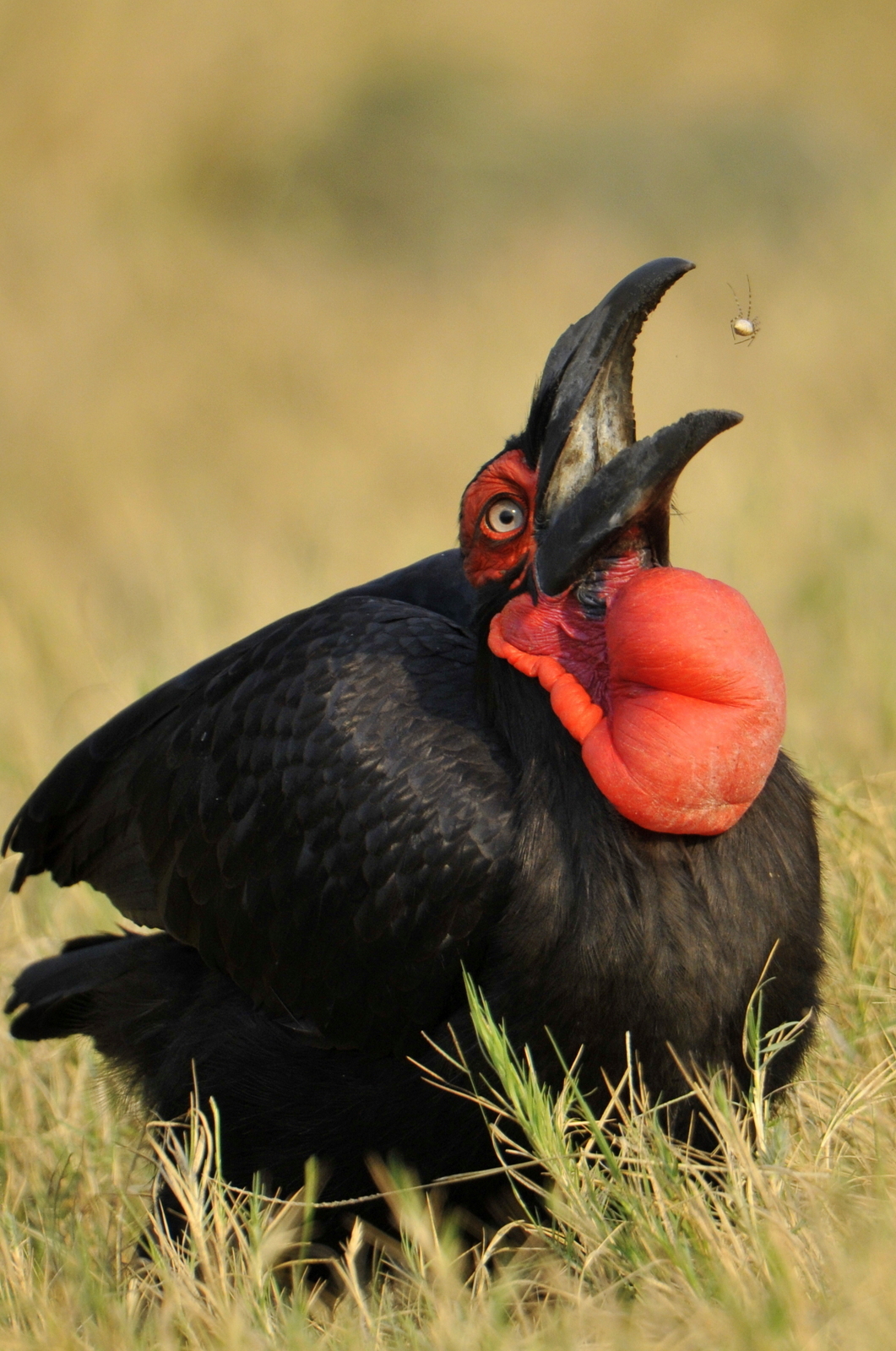
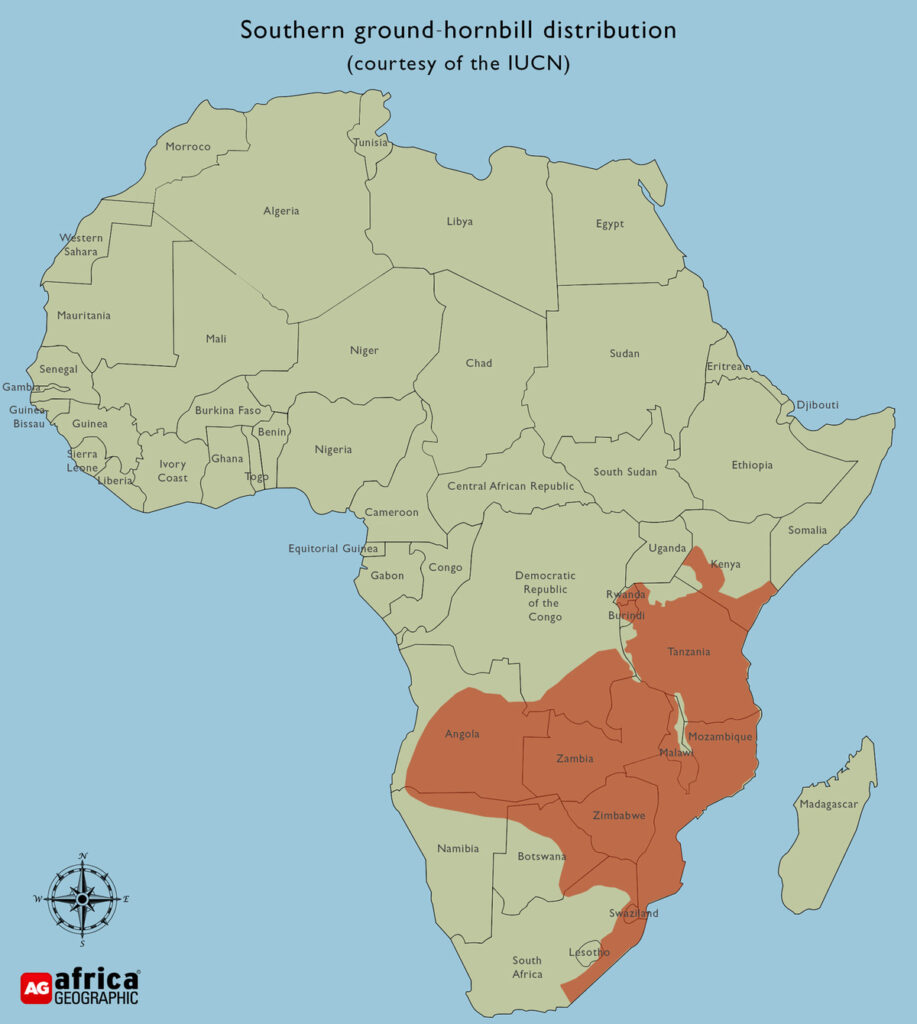
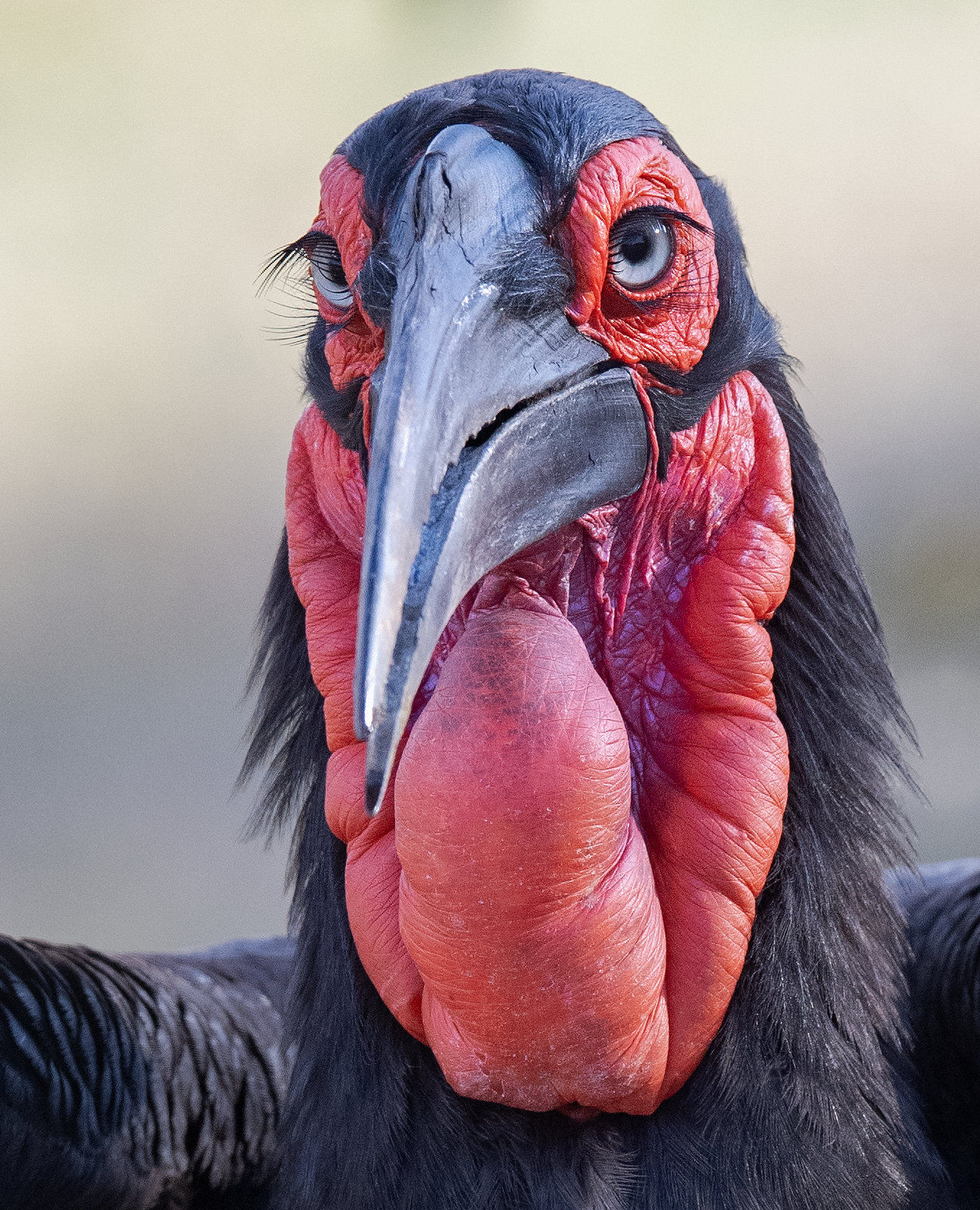
Craig Koppelman
What an amazing bird. Excellent portraits. Love the eyelashes and your post. Stay safe.
Michael
Thanks Craig! Hope you are well!
Erica
Omg, I love your stories Michael! I was just in Kenya with my family…all of whom were on their first safari. I took them there because you told me once that it is the classic safari location and never disaapoints. You were right! We saw a few of these birds wpndering around and our guides were obsessed with getting us a closer look at these fascinating creatures. Thanks for the in-depth info! All the best to you & Nicky.
Michael
Erica!! So glad that you made it on safari…I will need to hear more about your adventures. And thanks for your kind comments. Nicky and I are off to Tanzania for safari in October…